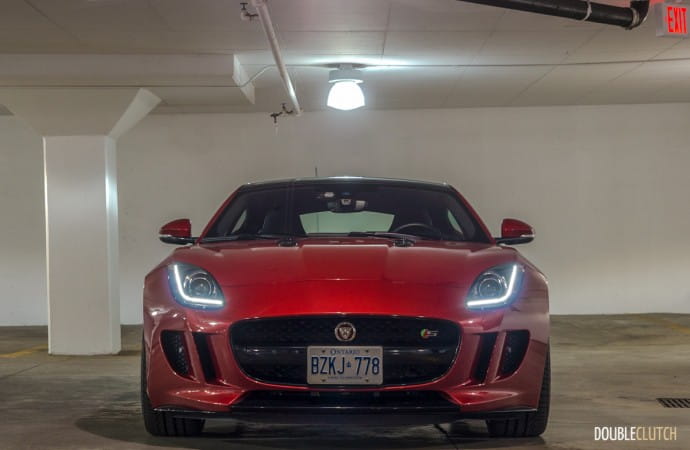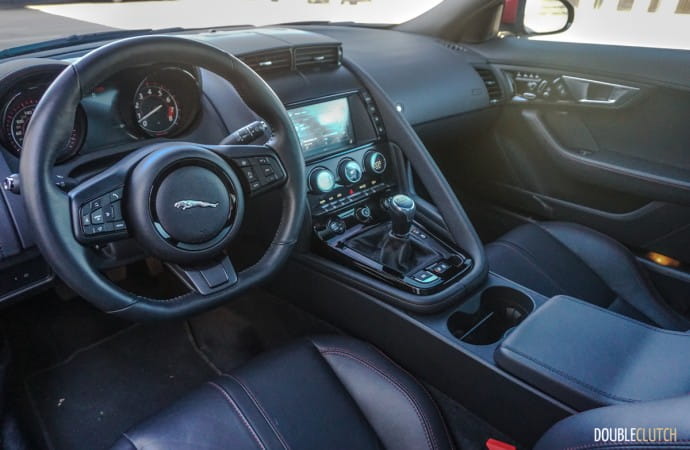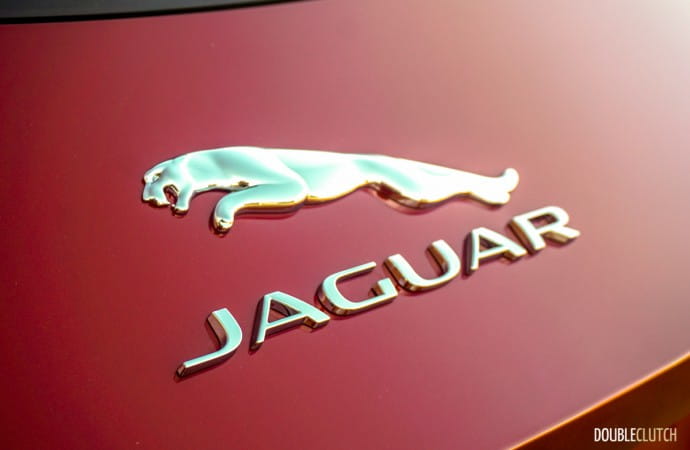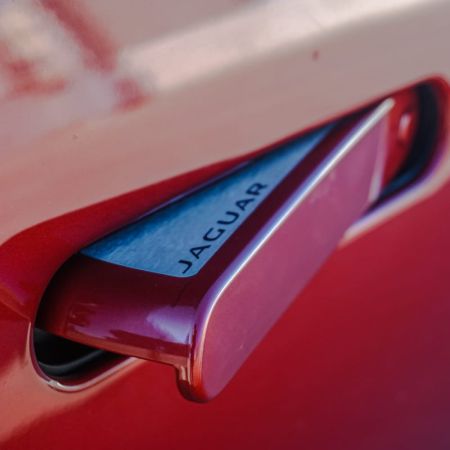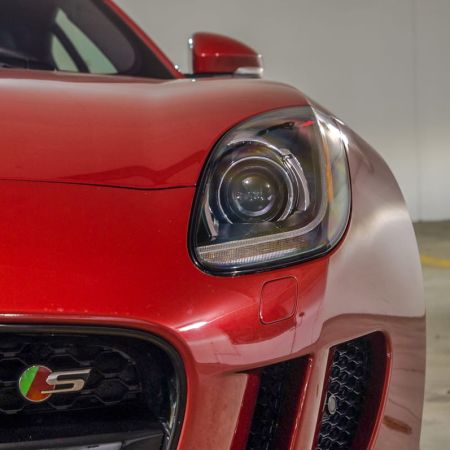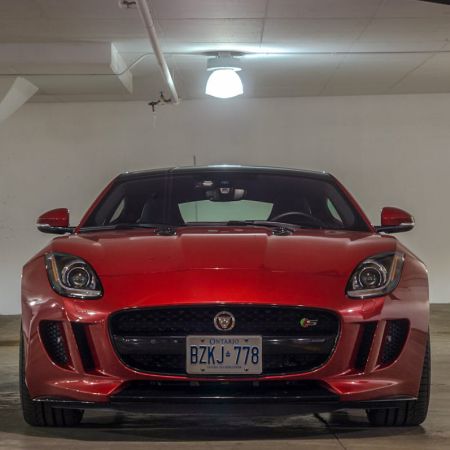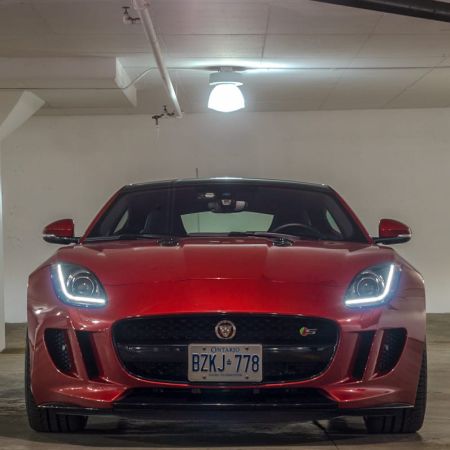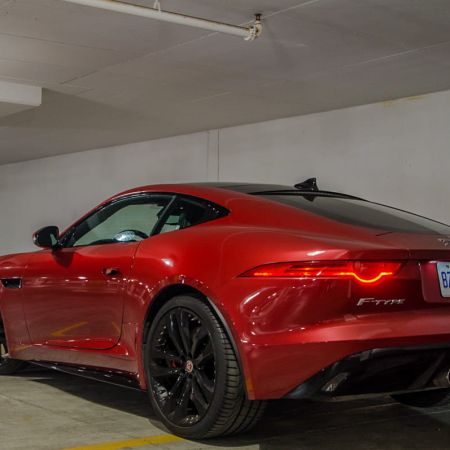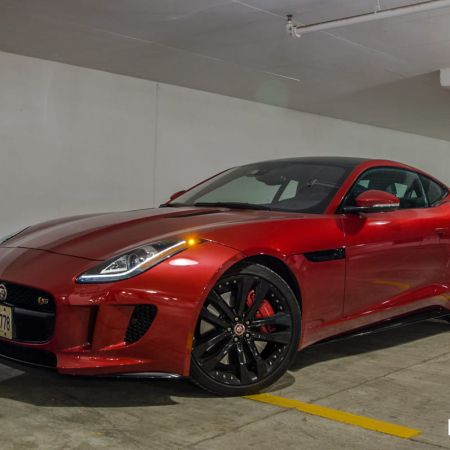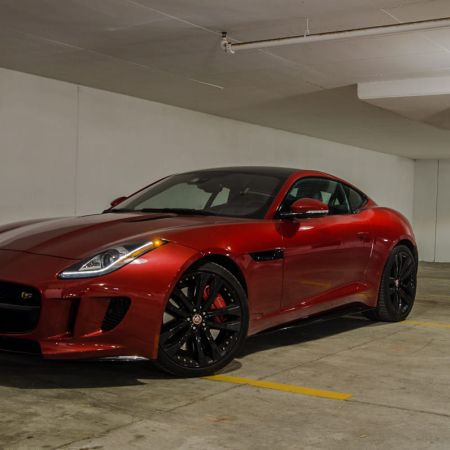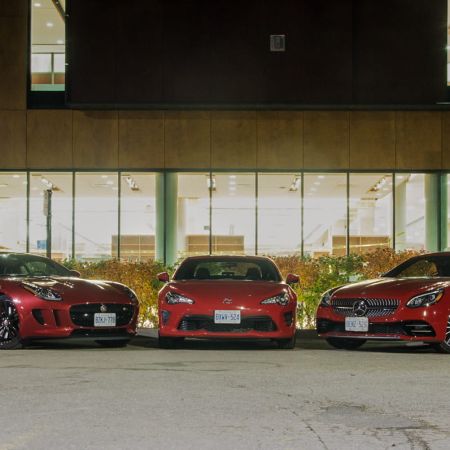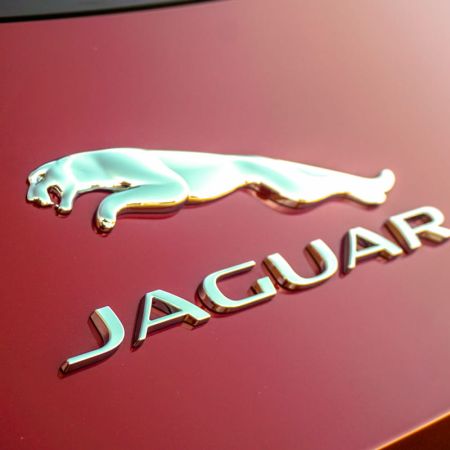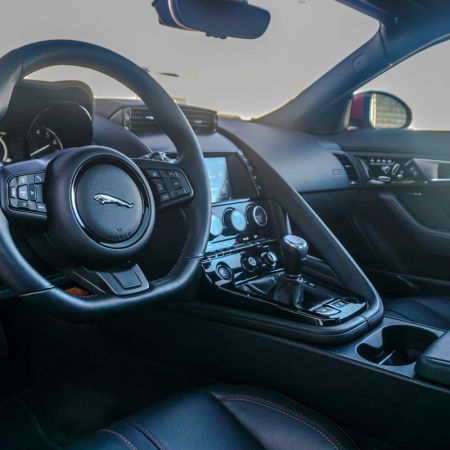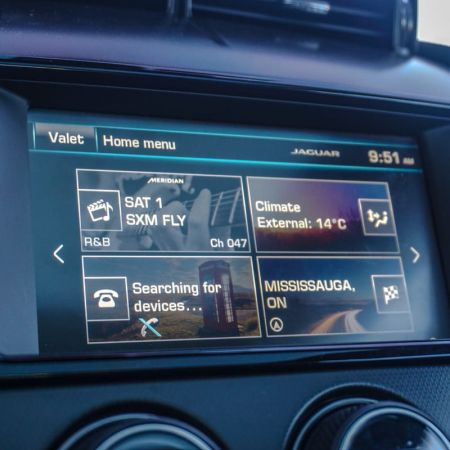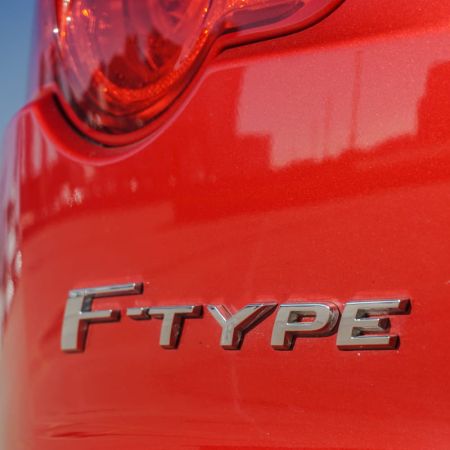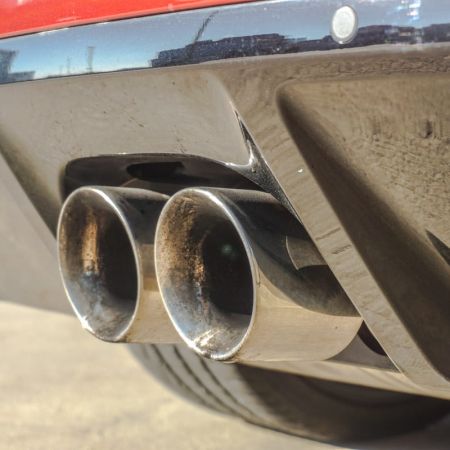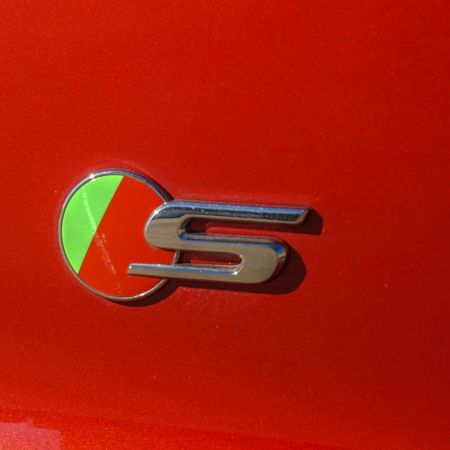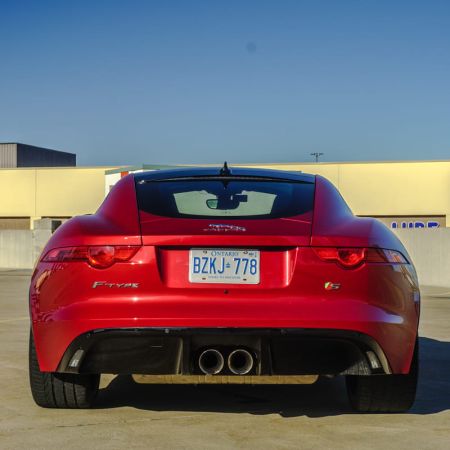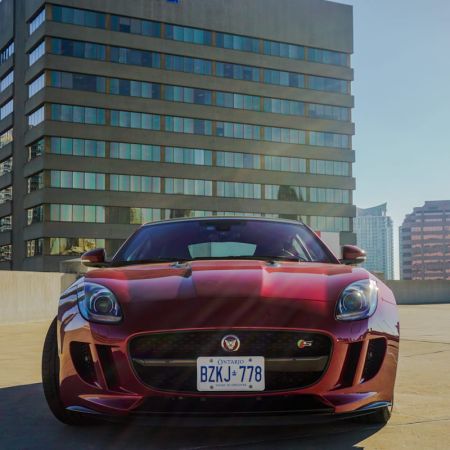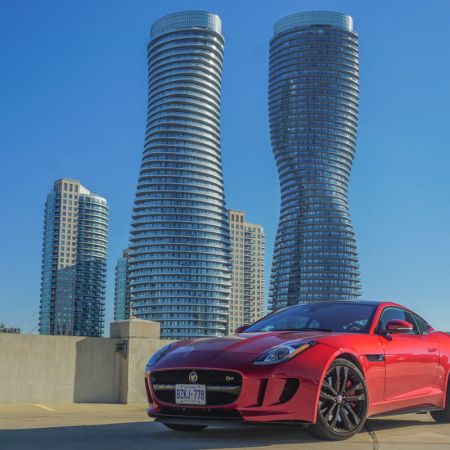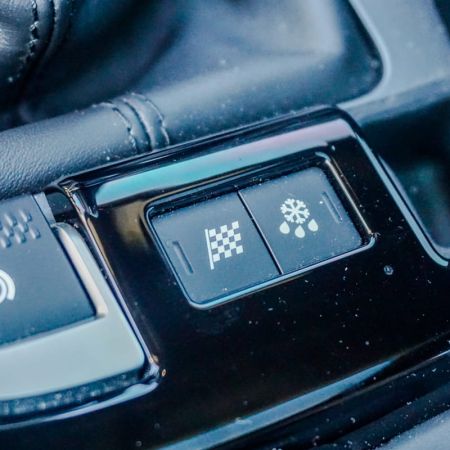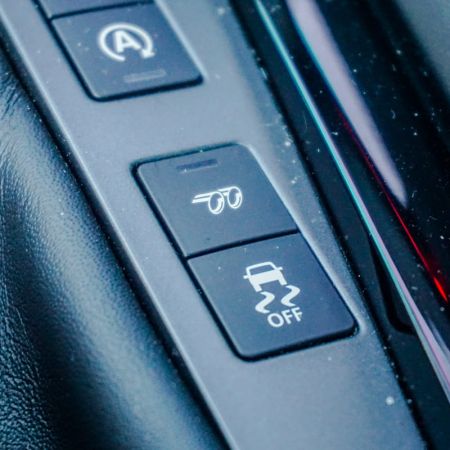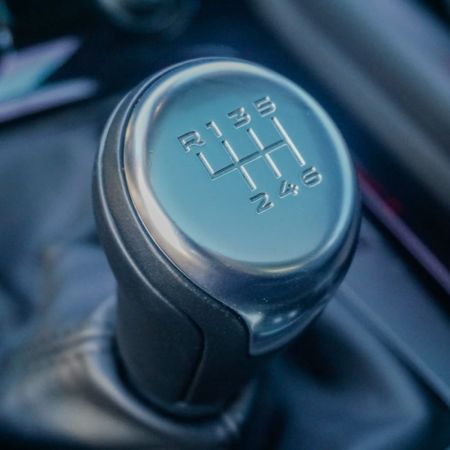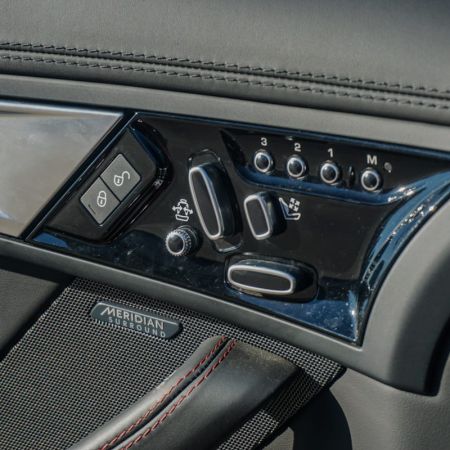Mechanically speaking, there isn’t much that differentiates the Jaguar F-Type Coupé from its convertible sibling (reviewed here). Both vehicles are stunningly beautiful, though I’m partial to the coupé’s low-slug roofline and fastback design. They both incorporate very similar powertrains, and they’re both backed by the heritage behind the Jaguar Land Rover brand. We recently sampled the convertible, but as the weather in Toronto became chillier into the autumn, we were set up with a 2017 Jaguar F-Type Coupe V6 S for a road test, just to see how it compares with the ragtop.
This car is striking and attracted an unsurprising amount of attention during our test week. I escaped the city and ventured briefly into the countryside to attempt some rural photography, but the sheer beauty of the car ensured that passerby continuously stopped to ask questions and remark on the styling. The coupé has a liftback-style rear cargo area, and the deck-lid is power operated. Sharp LED projector headlights with subtle strips for daytime running lights complete the front end, and the rear is finished off with the center-mounted dual exhaust and power-extending spoiler. The spoiler rises and lowers dependent on speed, and a button located next to the shifter can override this process.
On the inside, the F-Type has the layout one would expect from a modernized British grand tourer. There isn’t much interior space, but the glass roof brings plenty of light into the car, and two will be very comfortable when spending extended periods in the car. The power seats have plenty of available adjustments including side bolsters and lumbar support, although the seatbacks are too hard for my liking. The leather is soft and the dash is covered in soft-touch upholstery, meaning quality is top notch. When the climate control is shut off, the center vents disappear and become flush with the dashboard – this is a very neat touch.
Sending power to the rear wheels on this model is a 3.0L supercharged V6, the same application available in many other JLR models. It’s uniquely tuned for the F-Type, and is good for 380 horsepower at 6,500RPM, and 339 lb-ft of twist, kicking in at 3,500RPM. Whereas other cars in this segment, such as the Mercedes-AMG SLC 43 (reviewed here) employ turbochargers, it’s very nice to see Jaguar using a supercharger. As a result, power is immediate and the F-Type delivers its horses to the wheels very efficiently. When driving at city speeds, the advantages to the blower (low-end torque and power) are self-explanatory, and at highway speeds, there’s plenty of passing power.
Much like the F-Type convertible we tested earlier in the season, Jaguar equipped this test vehicle with a traditional manual transmission. We noticed the gearbox in this particular test vehicle to be a bit smoother in operation than the previous one, with excellent clutch engagement and a slick six-speed shifter. Typical for F-Types, the clutch damper is sensitive and can be a bit irritating if you’re used to very quick shifts. Manual transmission F-Types can only be had with the V6 engine and rear-drive configuration – stepping up to all-wheel-drive and the V8 (F-Type R and SVR) require selection of the eight-speed automatic.
Despite being an enthusiast and a manual transmission purist, I think I’d have the automatic on the F-Type. I know, I know – #SaveTheManuals is a very real movement, but there’s an explanation. One of the two-door Jaguar’s biggest appeals is the unmistakable noise that emits from the exhaust; many have said that the sound of firecrackers emitting from the twin pipes should be illegal (this is a good thing). As charming as the car is, the manual transmission car has been configured to be a bit quieter. The crackling exhaust only backfires when letting off the throttle at RPMs, but even still, the supercharged-six sounds absolutely perfect on acceleration. No contest though – this is not a quiet car, but the dual-mode exhaust can be quieted down at the touch of a button.
I didn’t see much of a difference with regards to handling from the V6 S convertible, but the solid roof means the car feels less floppy over bumps – we refer to this as the pool noodle effect. The F-Type Coupe is very composed and ride quality is very firm, even on the optional black 20” wheels on low-profile Pirelli P-Zero tires as equipped on our tester. Dropping down to the 19” size offered would soften up the ride a little bit, but this is a sports coupé, causing it to go suppler would take away from a bit of its appeal. Make no mistake however – sports coupé or not, the F-Type’s appeal is as a grand tourer. This is a car that will eat up hundreds upon hundreds of miles painlessly.
Just like the soft-top, fuel economy is rated at 15.3L/100km city and 10.0L/100km highway. We didn’t do too much mileage with this car, and the majority of it was intense city driving with tons of traffic. With very little highway use and use of 94-octane premium fuel (the car is rated for 91 and can accept it with no issues), our observed average was 12.3L/100km. Curiously, the reserve light for the 70L fuel tank comes in quite early, as the car accepted just 48L when we refueled. Irrespective of the 10L/100km highway rating, I’d be willing to wager that the car can do significantly better on a long drive with constant speed.
The only real challenge with the F-Type is the very dated infotainment. The XF (reviewed here), which was redesigned last year, gets Jaguar’s latest 12.3” touchscreen-based InTouch system, but the F-Type (and XJ) have yet to receive that update. The screen on the F-Type is much smaller, and touch sensitivity isn’t as crisp as the newer stuff. Navigating through playlists, entering destinations, and even tuning the radio all takes longer than it should, though the next update to the F-Type (we expect it in the next two years) should certainly bring this up to spec.
While pricing for the base F-Type Coupe with the manual gearbox starts at $78,500, the V6 S model (380hp versus 340) starts at $89,500. Our car was loaded to the gills, including Super Performance Brakes, 20” wheels, metallic paint, the Premium Leather Package, Premium Vision Package, performance seats and the Black Pack. The total sticker hits just over $105,000. Those looking for passion needn’t look elsewhere, but if value is a strict concern, the Porsche 718 Boxster (reviewed here) may be worth a test drive.
Turbocharging, advanced driver aids, semi-autonomous driving features and technology overall are taking over the automotive industry. Fascinating as it all may be, there is something about the simplicity of a grand tourer that has established its identity as a sports coupe as well. The 2017 Jaguar F-Type Coupe V6 S may not be the track day champion, or the value proposition, but it’s a car that ticks off a lot of the right boxes for many car guys. As a result, especially considering models equipped with three pedals, I have no doubt in my mind that the F-Type will someday be regarded as a highly reputed collector’s item. Whether to opt for the coupé or the convertible – that’s a choice left to personal preference.

